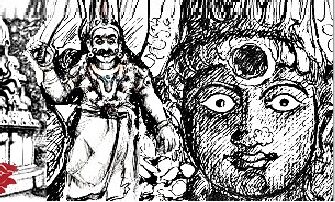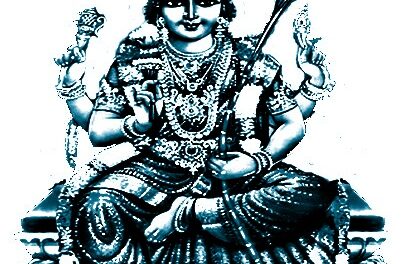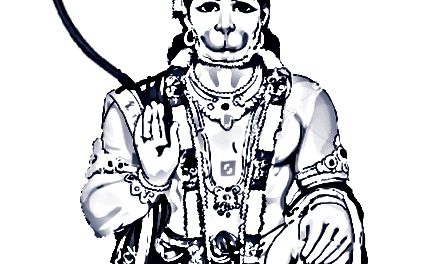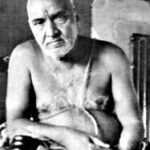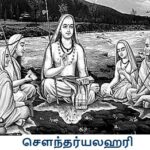
KULA DEVATHA OR TUTELARY/FAMILY DEITIES:
ORIGIN AND CONCEPT
-Santhipriya-
232. So, every family is guided by the Kula Devatha or Tutelary/Family deity through the Pithrus of their families, hence it is always said that the Pithrus are to be kept happy in Pithru Loga by necessary rituals meant to appease them. It is not only the Kula Devatha or Tutelary/Family deity’s command that the family receive thorough Pithrus, but also the commands of other divines prayed by the families are also sent through only through the Pithrus of those family to ensure that they reach the proper person who could be identified only by their Pithrus.
233. The divine principle has been that even if any one of the family members visit the main temple site of their Kula Devatha or Tutelary/Family deity to offer worship at least once in three to five years as a mark of respect to their family deity, that would be sufficient to absorb the invisible divine protective cover which gets automatically transferred to each and every one of their family members even if they remained in faraway places because the divine rays of pleased Kula Devatha or Tutelary/Family deity would travel to any length to protect their members.
234. It does not mean that those devotees who had not adapted the same deity as their Kula Devatha or Tutelary/Family deity but visit the same temple are denied the protective cover. Anyone who visit the temple and offer prayers, too are provided positive energy rays in the form of blessings and protect them for some time, but not to the extent of those under the protective covers of the said Kula Devatha or Tutelary/Family deity.
235. Similarly, when a family who held a specific deity as their Kula Devatha or Tutelary/Family deity if chose to ignore the worship of their family deity for any reason, the act would be construed as heinous crime and seven generations of the defaulter’s family would bear the brunt of the of the anger of their Kula Devatha or Tutelary/Family deity thus necessitating the family members of their successive generation to get rid of the sin with several forms of rituals or Vrath or prayers to appease the anger of their family deity.
236.Lastly, it is also surprising to note that over 90 % of the Kula Devatha or Tutelary/Family deities have emerged from rural spaces. As said earlier, their divine powers were also not lesser to the prime divines and were empowered to directly grant the favours for those who had adapted them as Kula Devatha or Tutelary/Family deity. At the same time, the very same tutelary deities were also empowered to answer the prayers of those who had no Kula Devatha or Tutelary/Family deities but accepted them as Ishta Devatha or general deity in that area. Again, while answering the prayers of general folks, the deities also ensure that the groups under their command were not affected in any manner.
237.It is seen that compared to divines manifested in the first three Yugas, more and more manifestations are seen during Kali Yuga. There is manifold increase of divine forces in the present Kali Yuga compared to those mentioned in Vedic scriptures, Ramayana and Mahabharata and many other texts in Hinduism.
238.Before activating and fill up the Universe with souls of several nature, Brahma may have meticulously worked out various aspects of the creations, the characteristics of each of the Yugas, several divines who would manifest in each of the Yugas including Kula Devatha or Tutelary/Family deity ,the time- frame for each of the manifestations in places assigned to them across the universe etc.
239. Does any norm exist as to how many Kula Devatha or Tutelary/Family deities and Village deities can manifest in a space? When Brahma sent divines to spaces, he may have ensured that, in a space for few hundreds of families, certain no of Kula Devatha or Tutelary/Family deities, Village deities and other guardian deities will be needed and accordingly he sent the ganas there to manifest in those forms. However, the Pundits were unable to explain details on them.
240.In the history of Kula Devatha or Tutelary/Family deity, a very important and interesting aspect is that the prime deities like Shiva, Vishnu and Parvathi have not been adapted as tutelary deities in their original form, but only their subordinate manifestations have been adapted as tutelary deities.
241. Who were the deities worshipped in the ancient period when divine worship commenced ? The deities, mainly female form of goddesses, associated with the well-being of the villages were either in violent posture or in benevolent ones and worshipped. There was no divisions such as Brahmins and non-Brahmins and everyone in the village worshipped the same deity in the same shrine or worship places which may have been either a Village deity, guardian deity or some unknown divine in the form of stones or spirits.
242. If we carefully analyse the deities worshipped as Kula Devatha or Tutelary/Family deity, they would find that around 85 % of the deities would be in female form- mostly emanations of Parvathi, hardly 10 % male- emanations of Vishnu or Shiva and 5 % major deities. Lord Vinayaga, Lord Hanuman, Lord Vishnu in their original form, Shiva in original form, Brahma, Saraswathi, Mahalakshmi or even Moon, Sun, Saniswarar and Krishna etc have not been adapted as their Kula Devatha or Tutelary/Family deity in their original form.
243. The present universe is dominated with many religions which have multiple sects in each. Naturally there may be several divine forces being worshipped by each religious sects. When looking at the different kinds of theism or belief in deities, the first big question we have to ask is this: how many deities are there?
244. The Yajurveda mentions that there were 33 Kotis i.e. 330,000,000 divines. (Ref: https://en.wikipedia.org/wiki/Hindu_deities). Another version mention the figure as 33 million Gods i.e. 33,000,000 (Ref: https://www.huffpost.com/entry/the-33-million-demigods-o_b_1737207).
245. It is quite possible that the above two figures may include several demi, semi and sub male and female divines, Deva ganas, Angels, Mohinis and Yoginis who were emanations from prime divines on many occasions. It may not have included the deities of other religions since the period in which the Yajur veda was written, there were no other religion except Hinduism.
246. However, both the figures on divines are contested by some analysts who state that the term 33 koti gods mentioned by the vedas have been misinterpreted as 330 million or 33 crore gods where as the 33 koti means 33 categories.
247. One of the analysts said ‘33 Crore Gods is a completely misinterpreted fact due to wrong translation of vedic Sanskrit by certain foreign scholars. The term ‘trayastrimsati koti’ mentioned in Atharvana Veda, Yajur Veda, and Satapatha-brahmana, is rightly translated as 33 Gods. The term koti in Sanskrit has two meaning, one is ‘type’ and the other is crore. (Ref : http://www.thenewsnow.co.in/newsdet.aspx?q=7208). Therefore, the word Koti might have indicated only the varieties of divines.
248. Another view aired is ‘Throughout recorded history, we can count between 8,000 and 12,000 gods who have been worshiped. But we can only count about 9 different types of gods (based on theological characteristics) who were worshiped. Each modern god also corresponds to one of these types, and 5 of them are of the Hindu type’. (Ref: https://lisbdnet.com/how-many-gods-are-there-in-the-world/).
249. However, the Anthropologists estimate that at least 18,000 different gods, goddesses, and various animals or objects have been worshipped by humans since our species first appeared. Today, it is estimated that more than 80 percent of the global population consider themselves religious or spiritual in some form. (ref: https://www.psychologytoday.com/us/blog/your-brain-food/202107/why-do-humans-keep-inventing-gods-worship) and worship divines of many nature.
250. It is however not known whether the village or guardian deities considered to be divine and worshipped in remote places have also been included or not in any of the recorded list or views aired. Certainly, no of divines worshipped cannot be either 33 crores, or 33 million or even stand at mere 33.
251. Since various versions create confusion, it would be better all of them be ignored and let the factual position be analysed from another angle.
252. As per the census in 2011 there were over 6,40,930 villages spread over the vast land of India alone (Ref: https://testbook.com/question-answer/how-many-villages-are-approximately-there-in-ind–5e1d7f7cf60d5d2d6cf1c8ee).
253. There is not even a single village where some divine is not worshipped. Most of the Village deities differ from one Village to the other. Therefore, even in a fair assessment we can assume that in India alone, 50% of the Villages could have had some form of divines- accounting to three lakhs i.e 3,00,000- who is worshipped by the locals. This is only an assumption.
254. When we read all versions in pre paras it will become clear that there may be multiple divines in many forms and appearances –say not less than a lakh – in this Universe and are worshipped by different people of different countries, different religious groups, ethnics and others.
255. See a case in Africa where many tribal exist and they worship several divines. Yoruba are probably the best-known West African ethnic culture in the world. In 1989, it was estimated that more than seventy million African and New World peoples practiced one form or another of Yoruba religion. Yoruba religions, inspired by them, are arguably the most widely dispersed West African religions, both in Africa and in the Americas.
256. Yoruba, one of the three major ethnic groups of Nigeria, have the same ethnic and cultural origins even though their geographic dispersal has located them in different modern states. They may also be the most theologically complex West African religions. It is estimated that the Yoruba have a pantheon of as many as six thousand deities which includes Village deities. (Ref: https://www.encyclopedia.com/history/news-wires-white-papers-and-books/deities-yoruba-and-fon-religions).
257. Look at another case. Zulu traditional religion in Southern Africa contains numerous deities commonly associated with animals or general classes of natural phenomena. They believe that the ancestors are believed to live in the spirit world unKulunkulu (meaning the greatest of the great) and are regarded as intermediaries between the living and the spirit world and they work hand in hand with God. They are similar to the Village deities. The Zulu were originally a major clan in what is today Northern KwaZulu-Natal, founded ca. 1709 by Zulu kaMalandela.
258. The ancient Greeks worshipped many gods, each with a distinct personality and domain. Greek myths explained the origins of the gods and their individual relations with mankind.
259. There are approximately 4,300 religions in the world. This information is according to Adherents, an independent, non-religiously affiliated organization that monitors the number and size of the world’s religions. (https://www.theregister.com/2006/10/06/the_odd_body_religion/) Even if one religion have their own divines the count could be not less than 4800, which may include village deities.
260. Therefore no one can give conclusive answer to how many divines are worshipped. All that we hear and read are based mere assumptions since in every country, multiple religions worship multiple divines of their own which includes Village deities. We can at best remain satisfied that there are multiple divines worshipped in the world whose count cannot be authenticated.
See References to all serial Nos 1 to 260 in the next concluding part……

